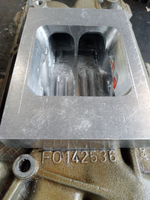sierra4000
Automotive
- Oct 17, 2013
- 239
Hello,
Exist some old tricks - recommendations for quick changes during fine dyno tuning to maximize power ??
(racing old style engine)
for example:
different fuel
carb. height change (differet spacer)
antireverse plate
exhaust tailpipe diameter change
etc
etc
Thanks for any tips
Radek
Exist some old tricks - recommendations for quick changes during fine dyno tuning to maximize power ??
(racing old style engine)
for example:
different fuel
carb. height change (differet spacer)
antireverse plate
exhaust tailpipe diameter change
etc
etc
Thanks for any tips
Radek

![[surprise] [surprise] [surprise]](/data/assets/smilies/surprise.gif)
![[wink] [wink] [wink]](/data/assets/smilies/wink.gif)
